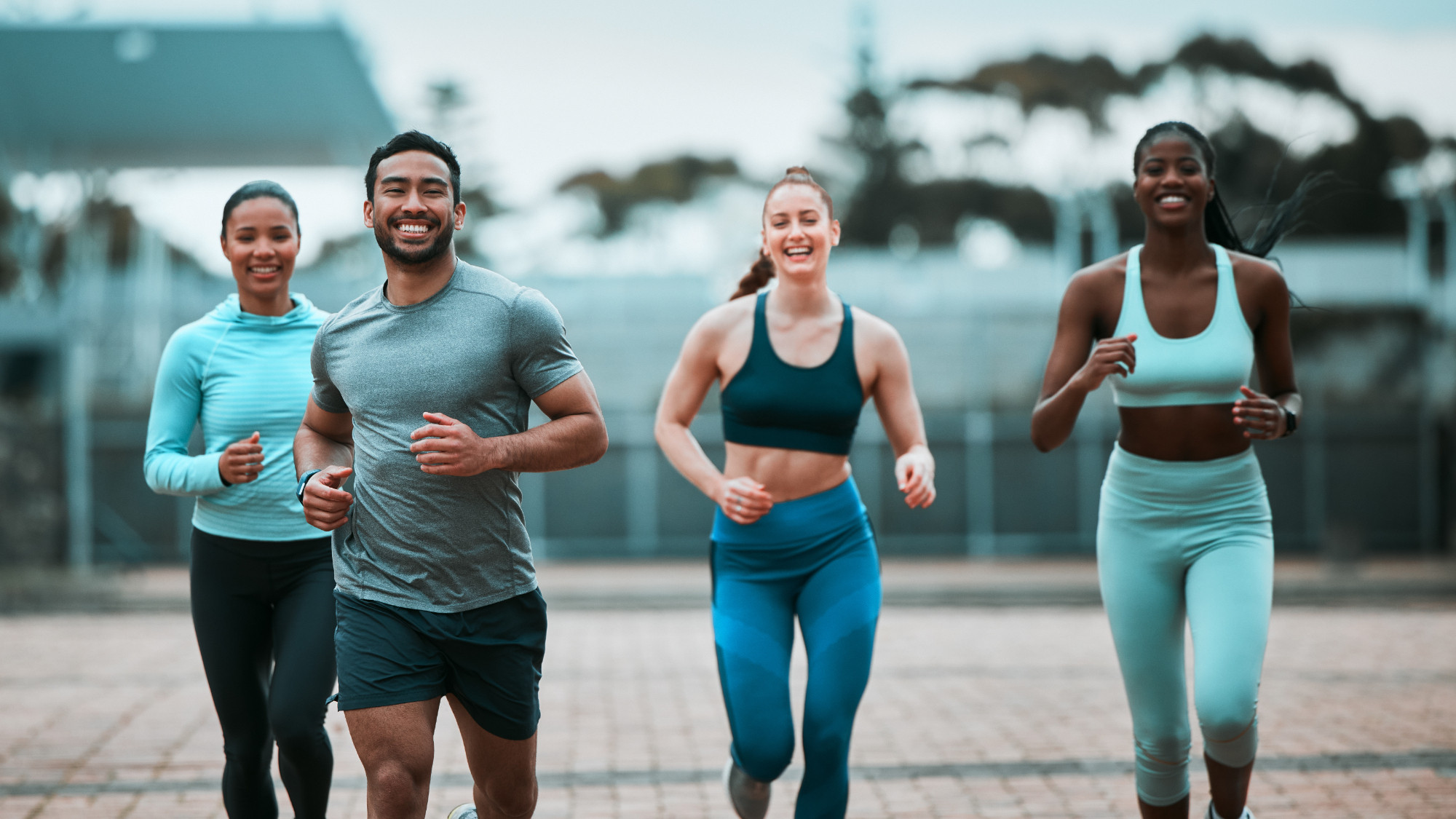What are the physiological effects of exercising outdoors?
The physiological effects of exercising both indoors and outdoors are extensive, however, there is a limited difference in the benefits between the two. Long-distance endurance training may encounter more terrain on outdoor surfaces, meaning consciously ensuring stabilisation means muscles may have to work harder – beneficial if you are a trail runner. Some people may also find more psychological benefits with training outdoors, with exposure to both endorphins and vitamin D being found to reduce anger, depression and improve mood.
Nevertheless, the physiological effects of exercising both indoors and outdoors include (But are not limited to):
Development of both your anaerobic and aerobic systems, perfect if you are looking to increase your cardiovascular fitness levels
Helps with body composition goals: Tied with your nutrition, regular physical activity can help to meet your body composition goals, whether this be decreasing adipose tissue, increasing muscle mass, or maintaining weight
Increases and maintains bone mass/density
Decrease in stress levels: Exercise of any form can act as a stress reliever by boosting your ‘feel-good’ endorphins and distracting you from daily worries, helping you to foster relaxation and increase feelings of self-efficacy, esteem, and control.
What benefits will I notice if I swap the gym for outdoors?
As stated, the physiological effects of exercising both indoors and outdoors are extensive, however, there is a limited difference in the benefits between the two from where the current research stands. As a general assumption, most people tend to train their aerobic systems more heavily outdoors e.g., long-distance runs, so it may be that if people are undertaking these more frequently outdoors, the development of aerobic energy systems (and anaerobic if undertaking intervals) may become more apparent, increasing the ability of the body to utilise oxygen and in turn, improving cardiovascular fitness.
If sticking to strength-based workouts, results should be similar to what is seen within a gym environment (e.g. increases in muscle mass/bone density, etc.) It is more the type of training rather than the environment where you will notice physiological benefits.
What should my go-to exercises be for an outdoor workout session?
Your own go-to -exercises following an outdoor workout should be dependent on your goal. Nevertheless, if you’re looking for an increase in overall total body strength, muscle size, movement competency, and decreased body fat, the below full-body workout may be a good option to help get a squat, hinge, push, pull and core exercise all ticked off in one circuit under 20 minutes. These can all be done bodyweight, perfect for outdoor sessions with limited equipment or time periods to work out. And it’s free!
Split Squat:
Stand with your lead leg loaded (hips over foot), and back leg extended behind you.
Slowly sink down towards the ground, keeping your chest proud throughout the movement.
Just before your knee touches the ground, explode back up to your starting position.
Eccentric Press Up
Begin in the starting push-up position (a full plank) with your feet together and hands just slightly outside of your shoulders.
Keep the core engaged as you bend the elbows backward and begin to lower toward the floor.
Control the exercise against gravity as you slowly lower to the ground.
Return to the starting position and repeat
YTW’s
Start the movement by lying your chest down on a mat.
Move your arms into a 'Y' position out above you. Whilst maintaining this position, retract your shoulder blades to squeeze and engage your back.
Next, move your arms into a 'T' position out to the side of you.
Finally, move your arms to a 'W' position, making sure you squeeze in each position.
Single Leg Hip Thrust
Start sitting on the floor with your back against a bench or chair, legs bent, and feet shoulder-width apart. Ensure the bottom of your shoulder blades is resting against the edge of the bench/chair.
Squeeze your glutes and push upwards until your hips are in line with your shoulders and knees. Throughout the movement, ensure your chin is tucked and looking forward, as well as keep your core tight.
Slowly lower back down until your hips are back to the starting position.
Dead Bugs
Start lying on your back with your arms straight out above you and your knees at a 90-degree directly over your hips.
Keeping your core engaged, exhale, and slowly lower the opposite arm and leg until they are just above the floor. Inhale, and bring both back to the starting position before switching to the other side.
30s each, 2 min rest, 3 rounds
What other tips should I consider when creating an outdoor workout?
Wherever your workout is, there are several points that can be utilised to ensure you do not get bored, and consistency remains, which I feel is the most important factor when looking to make progress in your health and fitness regime.
Be a kid! The outdoors can literally be a playground if you want it to be, so use what’s around you to the best of your ability. Benches, trees, kids’ playgrounds – these can be used for so many different exercises (push-ups, pull-ups, triceps dips, hip thrusts, split squats – you name it! – Be inventive!)
Make it a social time: Outdoor spaces are perfect for social meetups with friends etc. and can super help with motivation. With this, there’s no longer any need to skip working out or meeting up with your friends, as both can be done together – and can get everyone moving at the same time too.
Switch up the session layout: The intensity of workouts can be initiated through various means. To help keep things interesting, switch up session layouts to help keep outdoor workouts engaging. Circuit-based (one exercise after the other), intervals (time on followed by time off), set and reps, or time-based (e.g. as many reps as possible in 5 minutes) – whatever you fancy!
